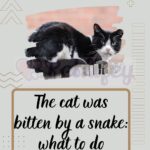
Phytotherapy is a word that derives from the Greek and is the scientific part of medicine that uses plants and minerals. In addition to treating the car body, psychophysical well-being too. Phytotherapy also includes homeopathy and flower therapy. Homeopathy covers about 25% of human and animal drugs deriving from herbs and plant extracts. Other compounds, on the other hand, are obtained by chemically synthesizing the natural compounds of the plant.
Homeopathic medicine is a practice that was discovered in Germany in the last years of the 18th century by a German physician and pharmacologist, Samuel Hahnemann, who immediately understood the importance of this discovery in the treatment of infinite diseases. Homeopathy works through the dilutions that according to the data of classical chemistry beyond a certain number of dilutions the drug no longer remains inside our body. The famous German doctor began a series of toxic experiments in which, however, he found that his “guinea pigs“, after repeated intakes of homeopathized bee venom, developed pains and swellings similar to insect bites, but without causing the reaction to the end.
How are homeopathy and flower therapy born?
The doctor verified that these symptoms were obviously cured thanks to the corresponding homeopathic remedy, so that through the dilutions of the bee venom the effects of intoxication were minimal. Obviously years later the drug similitude system arises according to which a substance that causes disease in a non-healthy individual can also cure it in a sick individual.
In 1796, Hahnemann wrote: “If the laws of medicine that I recognize and proclaim are real, true, natural, they will have to find the same application on animals as they have on man”. In fact, at the beginning of the 19th century, a veterinarian from Leipzig was already producing homeopathic medicines that he administered to horses and cattle. A century later in France, Dr. Dehecq created the homeopathic remedy that allowed thousands of females in the animal world to give birth without major problems.
While in 1955 the professors Lapp and Wurmser injected, in some laboratory rats, some arsenic in dilution in 7 CH of this poison; the rats metabolized the toxic and survived. Having verified this, we were able to arrive at the concept that it is not the substance that is toxic but the dose, and in the case of homeopathy what is important is the dilution.
As far as floriterpia is concerned, a young graduate of the University of Teramo, Dr. Giovanna Papitto, tells us about it. She expresses the concept of Australian Flower Therapy as a valid aid in veterinary practices through her thesis on Ecology and Ecotoxicology.
The first studies on the use of flowers in medical practices comes from Peracelsus, alchemist, great healer and mystic. Paracelsus claimed that any plant or flower bearing resemblance to an organ would have beneficial effects on it. He applied this principle to food as well as to medicine, emphasizing that “it is not in the quantity of food, but in its quality”. For example, plants with yellow flowers, such as marigold, were used to treat jaundice by marking the color, while red plants were used for blood diseases.
Even the petals of the iris were used for bruises always through the color signature. On the contrary, if a part of the plant reproduced the shape of an organ or a part of the human body, it could be used to treat diseases through the signature of the shape. The fruits of Portulaca were used to treat kidney diseases because of their shape resembling this organ. Hypericum, on the other hand, was used to treat skin diseases, because the lysigo pockets that characterize the leaves of this plant resemble bubbles.
Edward Bach, was the first founder of flower therapy through the use of plants. It is no coincidence that he founded a real remedy for a varied list of human and veterinary diseases.
“ Regarding the posology, it is the same whether it is puppies or adults, dogs or cats. In fact, it is advisable to give patients four drops three or four times a day, directly in the mouth or in water. The time of administration varies from patient to patient, depending on the case. It would be better not to put the drops in food, but it can still be done in clinical practice. If they are given directly into the animal’s mouth, it will not be necessary to place the drops under the tongue. If the animal licks the dropper pipette or smears it with saliva, it must be rinsed thoroughly in cold water before returning it to the special box. The quantity of drops is not categorical, if more are given the animal is in no danger, the remedy is consumed only faster without any further efficacy. There are no contraindications to the use of flowers, even in conjunction with traditional therapies.”
Flower therapy for dogs and cats
He divided the flowers he discovered according to the kind of negative attitude they tend to improve. they are then divided into categories according to the needs of the animal. Here are some examples:
Flowers for fear: Animals live in a constant sense of anxiety and fear, mixed with anguish that occupies most of their daily thoughts. In the cat, for example, it manifests itself through sudden and repetitive behaviors such as: semi-dilated pupils, puckering of the hair on the back, biting the nails, shaking with sudden movements. In the dog example, turning on oneself is typical of the Bull Terrier, sucking the side is characteristic of the Dobermann. Other phenomena can be: tail biting , self scratching , barking continuously, biting paws and nails, licking in specific points of the paw, polyphagia and polydipsia .
- Mimulus is the flower that represents classical fear, the fear of true and real things. It is therefore the remedy for the fears of everyday life.
- Rock Rose is the flower indicated for dogs who suffer from fright, sudden noises and who are traumatized by them.
- Cherry Plum represents the flower for desperate fear. feeling derived from a loss of control in which the subject losing all his inhibitions can become violent.
Flowers for insecurity: Uncertainty is a state of mind that we also frequently find in animals. It is characterized by a series of behaviors such as: separation anxiety, lack of inner balance and a lack of self-esteem and self-confidence.
- Cerato is the flower of insecurity, for the dog who lives in the shadow of the owner, especially in puppies.
- Schleranthus is used for subjects suffering from separation of masters. It is the dog “divided” between two owners who does not know which one to choose, due to a physical separation or the death of the owner.
- Hornbeam is prescribed to people who suffer from a form of fatigue that results in disinterest. Such as the horse that does not have a good working relationship with the handler.
Flower for solitude: In animals these attitudes can manifest themselves between conspecifics, towards people or towards both. Often individuals afflicted by loneliness like to be on their own, avoiding conspecifics (males and females).
- Water Violet: is used in healthy or sick animals that like to be alone. Especially for cats who do not like cuddling very much or for those who have had spinal damage and need manipulation.
- Impatiens is the flower for dogs and cats in need of this remedy are irritable and impulsive, cannot stay still and have very little patience with puppies showing poor maternal instinct.
- Heater is the flower for the lack of the master. loneliness from the owner, especially in some Dobermann breed dogs, takes away their vitality. Dogs howl and fidget all the time while cats often meow and rub against their legs.
Flower for Stress and Despair: Discouragement and stress are the most common symptoms of mental illness that many dogs are forced to cope with.
- Elm is the flower of stress . It is used in particular when the animal is forced to stay in tight spaces, trunks, the holds of an airplane or stressful situations such as changing the house.
- Larch is the flower for very submissive animals that have difficulties in reproduction and in the sexual act.
- Star of Bethlem is useful for the dog that has suffered a trauma, which can be an accident, a fall, the death of a loved one, abandonment.
Flower of Worry: In animals this group can be translated as over-attachment for overprotection. It is typical of dogs and cats that are very attached to their owners becoming unmanageable due to possessiveness, dominance and intrusiveness.
- the Beech flower is used in jealous dogs and we can recognize it in the dog that complains and cries constantly or in cats that spray urine on the objects of the owner.
- Chicory is used in the dog that usually wreaks havoc in the absence of the owner, while the cat urinates everywhere. Their possessiveness can cause them to become aggressive.
- Vervain is used for those dogs that never rest like Border Collies or shepherd dogs that run and work a lot taking care of the flock.
Flower of hypersensitivity that is often found in the dog who lives for the owner to the point of canceling his dog personality. Avoid conspecifics and refuse play by other dogs. In the dog area, he avoids everyone and only relates to the owner.
- Centaury is the flower remedy for the submissive. It is typical of overly “obedient” dogs that make their trainers satisfied, but who live on it. Exhibitions, agility competitions and sports, to the point of not seeing anything else.
- Holly is for those who are overwhelmed with jealousy and a sense of revenge. These forms are often due to mistreatment, harassment or negative experiences.
The emergency remedy is used in cases of shock, agitation, terror, or unconsciousness. It is suitable in all those cases in which there is a need for immediate veterinary intervention but which is not available at that precise moment. It could really improve the animal’s psychic qualities by allowing it to still arrive alive to the vet. It is composed of a blend of five flowers consisting of: Rock Rose, Cherry Plum, Impatiens, Star of Bethlem and Clematis.






